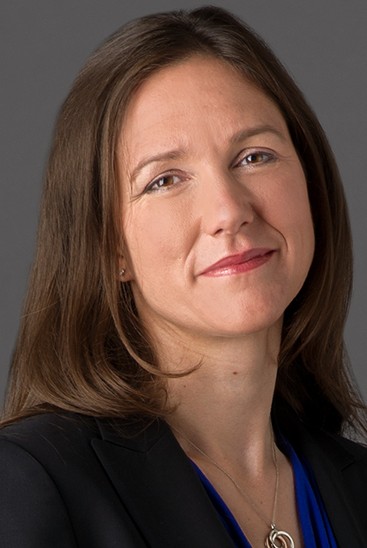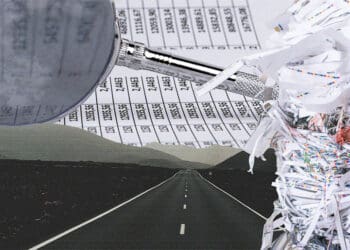In May, the head of the Criminal Division for the Department of Justice (DOJ), Assistant Attorney General Leslie Caldwell, advised companies to study the facts and circumstances underlying other companies’ guilty pleas, deferred prosecution agreements and non-prosecution agreements – using the official pleas and other government documents made publicly available online – as a tool to measure their own compliance and assess their potential criminal or regulatory exposure.[1]
You may initially conclude, dear reader, that the suggested reading materials will be dull and unlikely to excite the imagination. Never fear! This author is an avid reader who has put www.justice.gov and www.sec.gov on her summer reading list, and is now happy to share with you and other readers the fascinating Tale of Two Corruption Investigations, along with thoughts on lessons to be learned from the foibles and victories of our fellows.
“Is Resistance Futile?” – Lessons Learned From the Alstom Investigation
Our first tale, dear reader, is the woeful story of French power and transportation company Alstom S.A. A sense of foreboding settles upon our audience as we travel back to October 2014, when AAG Caldwell offered the following remarks:
“Although the department welcomes and encourages corporate cooperation, we do not rely upon it. We conduct our own robust investigations – often alongside that of the company – to build our own criminal cases and to pressure-test corporate claims of cooperation.”[2]
Only one short month later, Caldwell truly set the stage for Alstom’s sad tale when she publicly touted the DOJ’s momentum in collaborating with other international law enforcement and regulatory authorities in “the battle against transnational bribery,” explaining:
“Increasingly, we and our counterparts share information about bribery schemes. We report schemes to one another. And, where appropriate, we discuss strategy and coordinate our use of investigative techniques, so that we can obtain the best possible results, especially in very high-impact cases.”[3]
Her rapt audience did not have to wonder long about the circumstances that would warrant such cooperation. Caldwell went on to describe a recent collaboration where “countries across the globe” worked together to prosecute a scheme to bribe government officials in Indonesia. Caldwell told of the discovery of years of corrupt activities in Indonesia, the United States, Japan, Singapore, Switzerland, France and the United Kingdom, and a coalition of global law enforcement partners who “were able to share vital information and evidence,” in addition to “access individuals located overseas.”
Who were the actors in this tale of corruption? By that time, the DOJ had charged four executives of Alstom and its subsidiaries, as well as Japanese trading company Marubeni Corporation (which pleaded guilty and paid an $88 million fine). In concluding her remarks, Caldwell declared:
“Together, these coordinated global actions sent a powerful message – countries all over the world are now engaged in the fight against foreign bribery, and together we can and will hold to account individuals and companies who engage in corruption, regardless of where they operate or reside.”
Following these remarks, Alstom itself did not have to wait long for the tempest to set in. On Dec. 22, 2014, the DOJ announced that Alstom had pleaded guilty to a widespread bribery scheme involving tens of millions of dollars of bribes paid in Indonesia, Saudi Arabia, Egypt, the Bahamas and Taiwan and that the company had agreed to pay an astounding $772.29 million criminal fine,[4] the second-highest fine ever recovered by the DOJ in an FCPA case.
Dear reader, you may find your spirit dampened as you contemplate the enormity of the sanctions imposed on Alstom and wonder how it could have found itself in such an unenviable and infamous position. Thanks to our fine reading materials, the answer to these questions is at our fingertips. The factors are outlined in the DOJ press release and plea agreement:
- Breadth of corruption: The sophisticated scheme spanned years, occurred in multiple countries and business lines and targeted bribes to high-level government officials.
- Prior misconduct: Alstom had engaged in prior criminal misconduct, including conduct that led to resolutions with various other governments and the World Bank.
- Lack of an effective compliance and ethics program: Alstom lacked an effective compliance and ethics program and was even held up by Caldwell as a real-life example of how “[t]he lack or insufficiency of a compliance program can have real consequences for a company when a violation of law is discovered.”[5]
- Failure to report: Alstom failed to voluntarily disclose, despite knowledge of related misconduct at a subsidiary that previously resolved corruption charges with the DOJ.
- Refusal to cooperate: Alstom refused to fully cooperate with the investigation for years, only offering full cooperation after several executives were publicly charged by the DOJ.
Although valuable lessons may be derived from these factors, Alstom’s tale is truly distinguished by the final factor. Not only did Alstom fail to voluntarily report its representatives’ actions, it actively refused to assist with the investigation for years after the DOJ came knocking. While this refusal put the onus on the DOJ to develop its own case against Alstom’s representatives, it denied Alstom the opportunity to seek credit for cooperation when it finally faced the music.
While the DOJ is no alien menace from science fiction, boldly declaring that “resistance is futile,”[6] any company confronted with evidence of its own corrupt activity must be very careful in evaluating whether to cooperate or “resist.” Given what we have learned from Alstom, it would be unwise to assume that any incriminating evidence is likely to stay hidden from the growing number of international watchdogs. As Caldwell stated in the Alstom press release:
“[W]e will not wait for companies to act responsibly. With cooperation or without it, the department will identify criminal activity at corporations and investigate the conduct ourselves, using all of our resources, employing every law enforcement tool and considering all possible actions, including charges against both corporations and individuals.”[7]
“An Offer You Can’t Refuse?” – Lessons Learned From the Goodyear Investigation
Our next tale offers a pleasant contrast to the first. Although our protagonist, Goodyear Tire & Rubber Company, discovered apparent corrupt activities implicating its own employees, it faced these dire circumstances with resolve and emerged as an example of how a company may successfully navigate the minefield of an FCPA violation.
To set the stage, we will travel again to October 2014, when AAG Caldwell offered remarks acknowledging that most companies now understand the benefits of internal investigations and voluntarily disclosure, but noted that companies often fail to understand the importance of “willingness to cooperate in the investigation of [their] agents.” She explained:
“Corporations do not act, but for the actions of individuals. In all but a few cases, an individual or group of individuals is responsible for the corporation’s criminal conduct. The prosecution of culpable individuals – including corporate executives – for their criminal wrongdoing continues to be a high priority for the department.
For a company to receive full cooperation credit following a self-report, it must root out the misconduct and identify the individuals responsible, even if they are senior executives.”[8]
In further explanation, Caldwell noted that companies are not expected to become surrogate FBI agents or engage in surreptitious monitoring activities. Instead, they are expected to provide the government with pertinent facts, even when those facts suggest that company executives violated a criminal law. As she subsequently explained:
“To receive cooperation credit, a company must do more than comply with subpoenas or other compulsory process. Companies must provide a full accounting of the known facts about the conduct or events under review and affirmatively must identify responsible individuals (and provide evidence supporting their culpability), including corporate executives and officers – and they must do so in a timely way.”[9]
As you consider these expectations, dear reader, we advance our tale to February 24, 2015, when the SEC issued a press release revealing that it had charged Goodyear with violating the FCPA based on its subsidiaries’ payment of more than $3.2 million in bribes in Kenya and Angola. Although you may be tempted to imagine the sky darkening with foreboding, you should imagine instead a swelling of uplifting music as it is revealed Goodyear settled these serious charges by agreeing to certain remedial actions, monitoring, disgorgement of illicit profits and prejudgment interest – without any criminal charges or punitive fines.[10]
As the SEC explained in its Order, these terms were applied because Goodyear promptly halted improper payments once it learned of the bribes, reported to the SEC, produced pertinent documents and information, divested its interests in the participating company and subsidiary and – notably – “undertook disciplinary action against certain employees, including executives … who had oversight responsibility, for failing to ensure adequate FCPA compliance training and controls were in place at the company’s subsidiaries…”[11]
What we learn from the Goodyear investigation is the value of quick, decisive, dispassionate action in the face of the first signs of corrupt activity – even when that action may expose employees and executives to scrutiny, discipline or worse. While the potential benefits of cooperation according to the government’s terms may not quite qualify as “an offer you can’t refuse,”[12] they certainly warrant every wise company’s strong and serious consideration.
[1] http://www.justice.gov/opa/speech/assistant-attorney-general-leslie-r-caldwell-delivers-remarks-compliance-week-conference (“Caldwell Remarks, May 2015”).
[2] http://www.justice.gov/opa/speech/remarks-assistant-attorney-general-criminal-division-leslie-r-caldwell-22nd-annual-ethics (“Caldwell Remarks, Oct. 2014”).
[3] http://www.justice.gov/opa/speech/assistant-attorney-general-leslie-r-caldwell-speaks-american-conference-institute-s-31st (“Caldwell Remarks, Nov. 2014”).
[4] http://www.justice.gov/opa/pr/alstom-pleads-guilty-and-agrees-pay-772-million-criminal-penalty-resolve-foreign-bribery (“Alstom Press Release”).
[5] Caldwell Remarks, May 2015.
[6] Star Trek – First Contact (1996), http://www.moviequoter.com/actor/jeff-coopwood/.
[7] Alstom Press Release.
[8] Caldwell Remarks, Oct. 2014.
[9] Caldwell Remarks, May 2015.
[10] http://www.sec.gov/news/pressrelease/2015-38.html
[11] https://www.sec.gov/litigation/admin/2015/34-74356.pdf
[12] The Godfather (1972), http://www.imdb.com/title/tt0068646/quotes.















